Leonardo da Vinci (1452-1519) wrote a treatise, the Codex on the Flight of Birds, which put forth the first scientific observations on the subject of flight. He discovered the vortices that are produced off the wings, and observed the alulae, or "thumbs" of the wings. He was concerned with the center of gravity, stability, and maneuverability.
Leonardo sketched several types of flying machines: helical wing, beating wings, parachute, and bat's wings. Through real life trial and error Da Vinci learned the difficulty of realizing his great dream of flying in a machine powered by human propulsion, and turned his talents toward the problem of gliding flight. In the glider drawing below, the flyer's position is studied at the point where he is balanced through movements of the lower part of the body. The wings, modelled upon those of bats and birds of large wingspans, are fixed on the inboard portion (next to the flyer), and mobile at the external portion. This part of the wing in fact can be moved by the flyer by a control cable connected to handles. Leonardo arrived at this solution by studying the wing structure of birds and observing that the inboard part of their wings move more slowly than the outboard, and that therefore serve to thus sustain themselves and produce forward thrust.
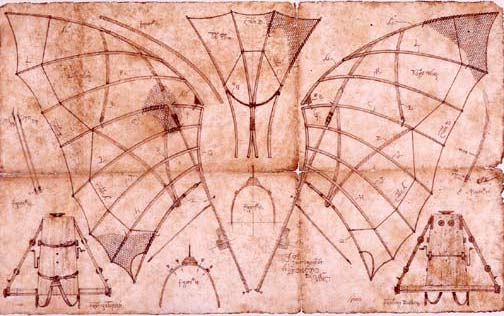
"The great bird will take
flight above the ridge...filling the universe with awe, filling all writings
with its fame..."
- Leonardo on manned flight
Early Da Vinci gliders had a articulated wing with a system of belts passing between the thighs and around the body of the flyer. He later reduced the structure to a simple form with wings directly attached to the human body.
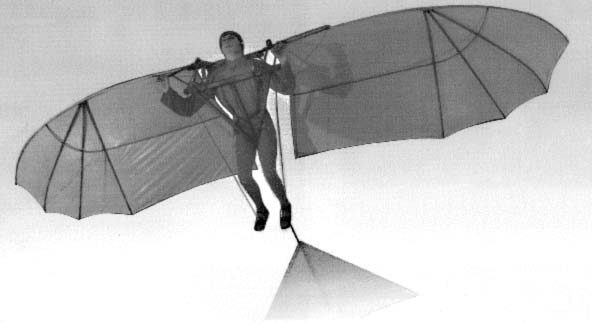
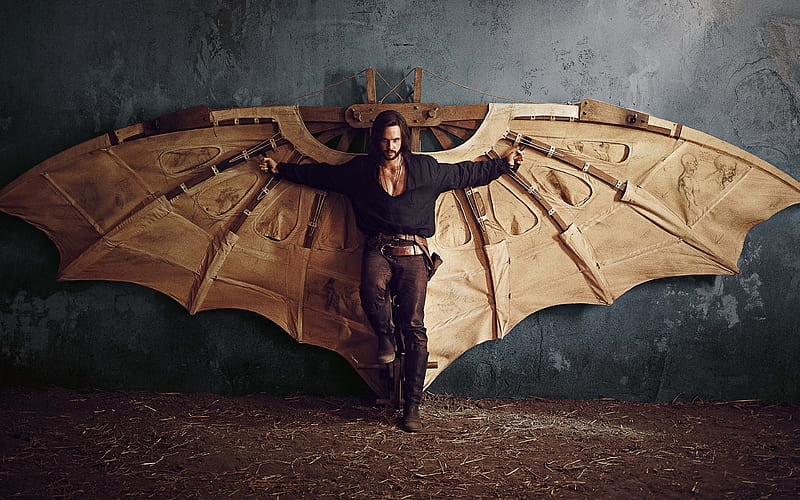
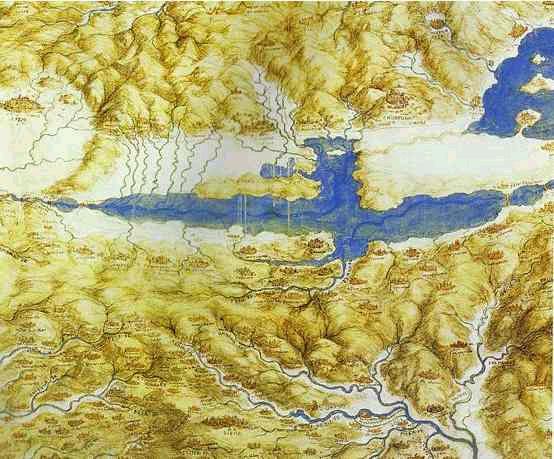
Leonardo Da Vinci: Bird's-Eye View of a Landscape. 1502.
Pen, ink and watercolor on paper. Windsor Castle, Windsor, UK
The question that always comes up regarding Leonardo and his flying machines is did they actually work. I often cite the above watercolor of a birds-eye view of a landscape as an example of Leonardo's success. Even though Leonardo was an incredible artist with an incredible mind, it is difficult to believe, after seeing the watercolor and several others like it, that he did not actually see and observe the landscape from the view dipicted. The following quote is from the "Did Leonardo Da Vinci Fly?" link below:
"Thus did Leonardo rise in the warm air current—his mouth open to relieve the pressure constantly building in his ears—until he could see the top of the mountain...it was about a thousand feet below him. The country of hills and streams and farmland and forest had diminished, had become a neatly patterned board of swirls and rectangles: proof of man's work on earth."
Leonardo's last design had a wingspan of 24 meters, nearly 80 feet, a design like no other device he had ever sketched or built. Da Vinci reached beyond nature to conceive a free-flying craft with flat surfaces to support it and a man in the still air. It had double wings, cellular open-ended boxes that was stable as box kites of like construction. For more please click the following image:
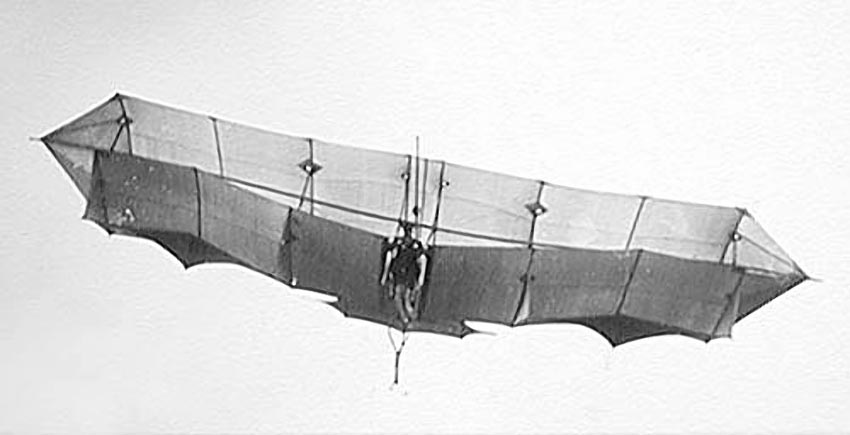
A late 19th, early 20th century flying machine, a
virtual copy of the Florence Da Vinci glider. Click
to see pilot in lower wing center "Floating on the
air like a raft."
Even though my Uncle had stopped the design and construction of the flying machine we were working on because of my older brother, it was only for a short time. It wasn't long before he discovered it wasn't worth all the effort he had to put forth to stop me, so not a whole lot of time elapsed before the two of us were back feet first into finishing it, with most of our difficulties in doing so stemming from stretching the fabric to a flight worthy satisfaction. Eventually we were able to complete the flyer to such a point we both felt it would actually work.
However, no real plans were set into motion to attempt a flight, and with no prospect in sight for doing so, one day, taking matters in my own hands and without my uncle's knowledge or approval, a friend of mine and I hauled it out of it's lair and up to the top of the second story apartments across the street, re the following:
"It was only a short time after returning from the desert during the summer of 1948 that I, just before school started and around age 10 or so, removed the flying machine my uncle and I built from the hanging position of it's construction lair and hauled it up to the rooftop of the second story building across the street. Then, holding onto the machine for dear life, I jumped off.
"At first the craft seemed easily able to maintain the same two-story height advantage over quite some distance. But then, partway into the flight, instead of continuing in the direction I wanted, it began tipping lower on the right and turning. Without ailerons or maneuverable rudder controls and with inexperienced over-correcting on my part creating an adverse yaw followed by a sudden stall, the ensuing results ended with a somewhat dramatic drop, crashing into the porch and partway through the front windows of the house diagonally across the way."
(source)
As far as the "lack of flight controls mechanisms," unknown to me or my uncle at the time we were building the flying machine, the design we used was based on a Lilienthal model known as Type IX (9). If you take a good look at the graphic at the top of this section, as well as the cigarette trading card, you will notice the wing on the right in the photo, between the 5th and 8th rib, there appears to be what looks like some wrinkles in the fabric. That damage was part of the results of the Type IX crashing, and doing so under almost the exact circumstances as my flyer --- with the same outcome. Little did my uncle and I know, with the information we had at hand, that the design we were using had stalled and crashed when Lilienthal flew it for the first time. If we had known, we could either used another design or taken into consideration safeguards to ensure the same results would not happen to us, i.e., me. See:
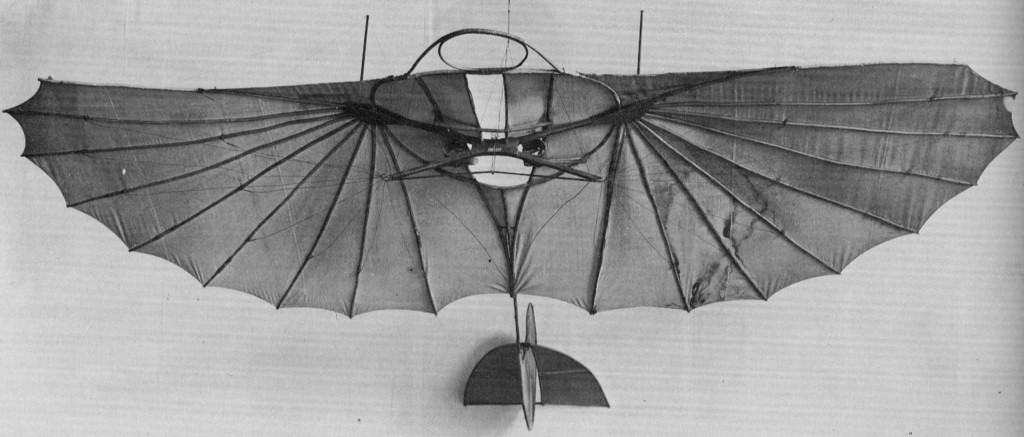
LILIENTHAL GLIDER TYPE IX (TYPE 9)
DID LEONARDO DA VINCI FLY?

(please click)
FLYING HUMANS AND THEIR ATTEMPT TO DO SO
FLYERS BEFORE DA VINCI
RETURN TO DA VINCI FLYING MACHINES
PROVIDED THROUGH THE GRACEFUL SERVICES OF
The Glider History Site
(site no longer active)
And:
the Wanderling
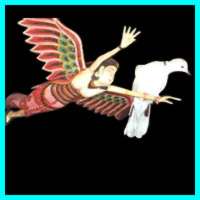
THE SKY IS MAGICAL? (click image)
LEONARDO |
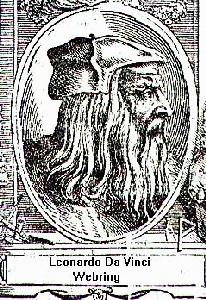 |